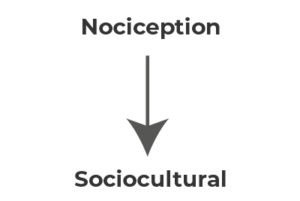Pain chronification describes the process of transient pain progressing into persistent pain; pain processing changes as a result of an imbalance between pain amplification and pain inhibition; genetic, environmental and biopsychosocial factors determine the risk, the degree, and time-course of chronification.1
Chronification simply refers to the gradual transition of acute pain to chronic pain. There are gradual modifications in the anatomical and physiological architecture of the pain pathways. It involves pathophysiological changes in pain processing that result in sensitisation, which plays a critical role in the development of chronic pain. Sensitisation is characterized by a decreased pain threshold, together with heightened and exaggerated responses to noxious stimuli.2
Chronic pain may involve irreversible pathophysiologic changes in the nervous system, so interrupting the cascade of events that allows acute pain to advance to chronic pain is of crucial importance and should be the goal in prompt intervention.4










